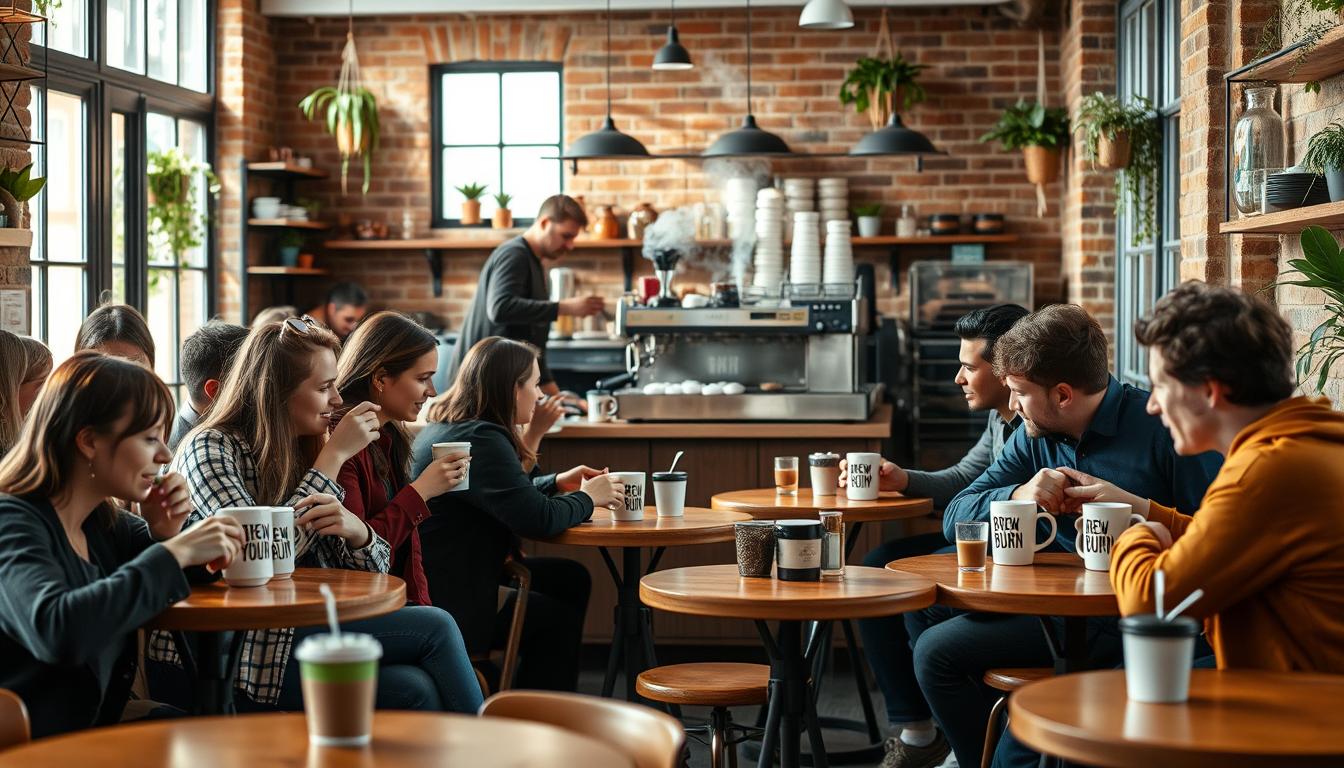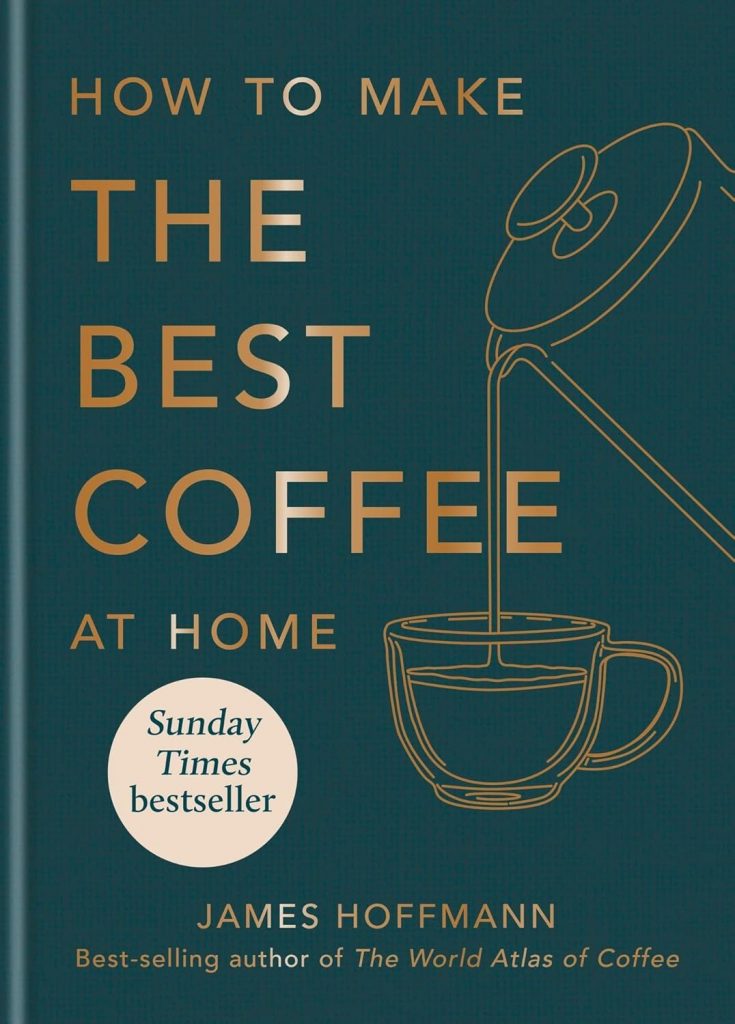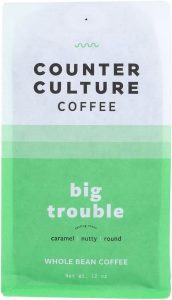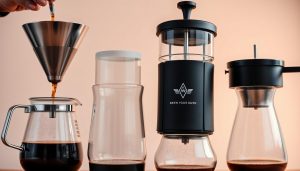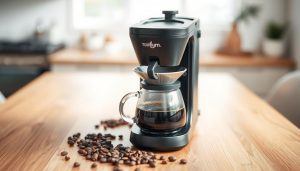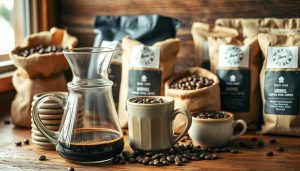Welcome. This guide is for coffee lovers at every level.
Whether you’re new to brewing or looking to improve, you’ll find clear steps to enhance your daily cup.
We dive into gourmet and specialty coffee, explaining bean choices and home brew methods.
You’ll learn about the best coffee blends, gear, and how to pick a coffee subscription that suits your taste and budget.
This article relies on expert sources for reliable brewing techniques.
James Hoffmann’s How To Make The Best Coffee at Home is a top resource for history, science, and home brewing tips.
The tone is welcoming, positive, and supportive. You can expect short, actionable instructions and clear explanations.
This makes complex topics feel simple and useful.
Key Takeaways
- This guide helps coffee lovers navigate beans, brewing, and gear.
- It explains gourmet coffee versus specialty coffee and why it matters.
- You will find tips for choosing the best coffee blends and subscriptions.
- Practical, expert-backed steps are included for home brewing and ordering.
- Recommended reading: James Hoffmann’s How To Make The Best Coffee at Home.
Why Coffee Matters:
A Brief History and Culture of Gourmet Coffee
The story of coffee starts with small farms and long trade routes. It moved from the Ethiopian highlands to the Yemeni ports.
This journey shaped how people valued the bean.
Over time, coffee became a global commodity. It was prized for its flavor and the ritual of drinking it.
As quality became more important, producers experimented with different beans and methods.
This led to specialty coffee. It focuses on the bean’s origin and flavor.
Origins of coffee and the rise of specialty coffee
Early trade created a demand for a consistent coffee supply. In the 20th century, quality-focused growers in places like Colombia and Ethiopia worked with roasters.
They aimed to improve coffee standards.
The Specialty Coffee Association developed scoring systems. This helped buyers find the best coffee.
It also gave coffee lovers a reason to care about where their coffee comes from.
How coffee culture evolved in the United States
U.S. coffee culture changed from diner pots to espresso bars. The second wave brought chains with flavored drinks.
The third wave focused on craft and education.
Americans started to prefer lighter roasts and single-origin coffee. Cafés published tasting notes and brewing guides.
Baristas emphasized the importance of extraction and water quality.
What “gourmet coffee” and “specialty coffee” mean for taste and sourcing
Gourmet coffee means higher-quality roasting and blends. Roasters like Stumptown and Intelligentsia offer unique blends.
These aim for balance and complexity.
Specialty coffee focuses on measurable quality. It meets scoring thresholds and traces to specific farms. This results in more transparent flavors.
James Hoffmann’s approach bridges history and technique. He helps coffee lovers understand the why and how of great coffee.
His perspective keeps the joy of drinking coffee in mind.
Choosing the Best Coffee Beans:
Arabica, Robusta, and Organic Coffee Beans
Choosing the right beans is key to a great cup of coffee. Coffee lovers should know the basics to pick the perfect beans.
Look at labels and farm notes to understand what’s in your bag.
Flavor differences between Arabica and Robusta
Arabica is sweeter and more complex. It has floral, fruity, or chocolate notes and less bitterness.
Many specialty roasts use Arabica for its nuanced flavors.
Robusta is bolder and has a stronger bitterness. It has more caffeine and makes a rich crema in espresso. Roasters often mix Robusta with Arabica to add strength without losing balance.
How origin, altitude, and processing affect flavor
Where the beans come from matters. Countries and regions affect the soil, rainfall, and local varieties.
Ethiopian beans are often bright and fruity, while Brazilian beans are chocolatey and nutty.
Altitude affects acidity. Higher altitudes have brighter acidity and finer flavors. Lower altitudes have a heavier body and earthier tastes.
Processing methods change the taste. Washed processing brings out clean acidity and clarity.
Natural processing enhances fruit and sweetness. Honey processing offers a balanced sweetness and gentle body.
Check the bag for farm, region, and processing details. This helps match the taste with your preferences.
Benefits and certifications to look for with organic coffee beans
Organic beans reduce pesticide use and can taste clearer. Organic farming supports soil health and biodiversity, helping local ecosystems.
Certifications prove claims. USDA Organic means no synthetic chemicals. Fair Trade ensures fair wages and better working conditions.
Rainforest Alliance promotes conservation and responsible land use. Specialty marks show quality and traceability.
As a coffee lover, look for bags with clear certifications and origin details. This helps find ethically produced beans and the best blends for your taste and values.
Home Brewing Essentials for Coffee Lovers
Start with the basics and build confidence. Good home brewing depends on a few clear variables: grind size, water temperature, and coffee-to-water ratio.
Small, consistent changes make the biggest difference when you want reliable, tasty results with gourmet coffee at home.
Use a scale and thermometer for repeatable results. Measure beans by weight, not volume.
Aim for water between 195–205°F for most brews. Try a coffee-to-water ratio near 1:16 by weight for a balanced drip and adjust toward 1:15 for a stronger cup or 1:17 for a lighter cup.
Grind size controls extraction. Coarse grind fits French press and cold brew. Medium grind suits drip and many pour-over devices.
Fine grind is best for espresso and the Moka pot.
Match grind, time, and method to avoid under-extracted sour or over-extracted bitter flavors.
Grind size, water temperature, and coffee-to-water ratios
Keep changes simple. Shift one variable at a time. If a cup tastes weak, try a finer grind or a slightly stronger ratio.
If it tastes bitter, coarsen the grind or lower water temperature a few degrees. Track results in a small notebook or app to repeat what works.
Recommended equipment for beginners and enthusiasts (drip, pour-over, French press, Moka pot)
Beginners should start with an entry-level burr grinder and either a drip machine or a French press.
A basic pour-over kit, like a Hario V60 or Kalita Wave, pairs well with a cheap scale and paper filters.
These setups make it easy to learn variables without breaking the bank.
Enthusiasts benefit from a quality burr grinder, a gooseneck kettle for steady pours, and a precision brewer such as a Chemex or a Timemore drip scale.
A Moka pot gives strong, espresso-style coffee on the stove and highlights body and sweetness.
Each method reveals different aspects of a bean’s flavor.
Tips from experts and resources (referencing How To Make The Best Coffee at Home by James Hoffmann)
Read James Hoffmann’s How To Make The Best Coffee at Home for methodical guidance and clear graphs.
Hoffmann breaks technique into manageable steps and explains tasting, history, and multiple brewing methods.
Wirecutter’s Ciara Murray Jordan recommends it for readers at any skill level.
Try Hoffmann’s brewing charts and experiment with variables. Use recommended coffee accessories like a reliable burr grinder and thermometer to match his suggestions.
Testing small changes will help you learn what your palate prefers and turn routine home brewing into a more rewarding ritual.
Mastering Espresso and Milk-Based Drinks
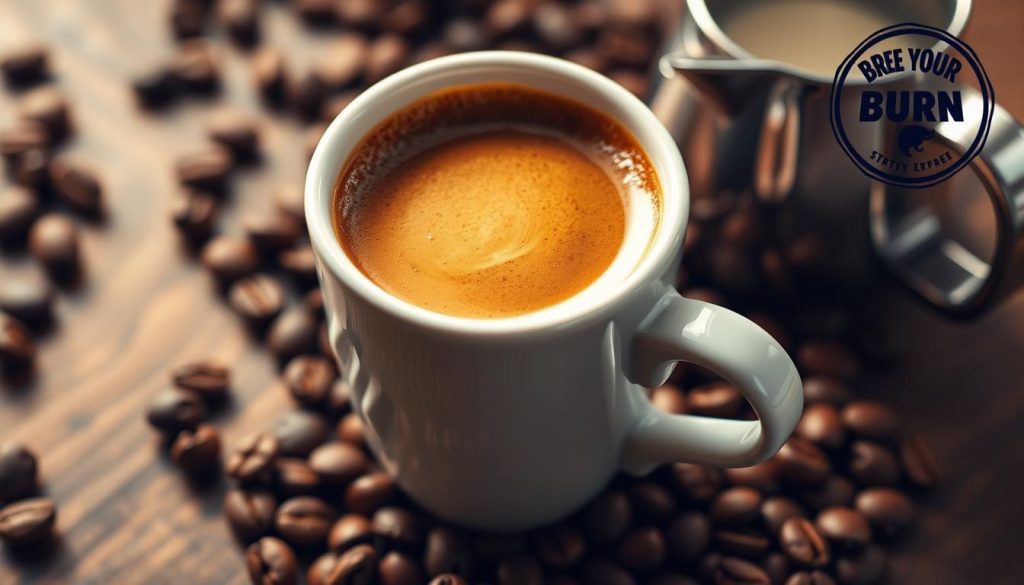
Espresso is a strong coffee made by forcing water through ground coffee under high pressure.
It’s the base for many milk drinks and shows coffee’s true flavors in a short, intense sip.
Learning a few simple techniques can make a big difference, whether you’re at home or in a cafe.
What defines espresso and common drinks
Espresso packs a lot of flavor and crema into a small amount. A latte mixes an espresso shot with steamed milk and a thin layer of microfoam, making it creamy.
A cappuccino has equal parts espresso, steamed milk, and microfoam for a drier feel.
A flat white uses a double shot with thin, silky microfoam to highlight the espresso’s strength.
A macchiato is a straight espresso with a touch of milk foam for a quick contrast.
Technique tips for reliable shots and milk
Tamping must be even and firm to ensure water moves uniformly through the puck. Aim for a consistent pressure that you can repeat each time.
Extraction time for a double shot is usually 25–30 seconds; adjust the grind size if shots are too fast or slow.
Watch the shot’s color and flow. A fast, pale stream means under-extraction.
A slow, dark stream means over-extraction. Use these visual cues alongside taste to fine-tune your grind and dose.
Texturing milk depends on the steam wand position and temperature. Keep the tip just below the surface to stretch milk and create microfoam, then lower it to heat.
Aim for a finished milk temperature near 140–155°F for a sweet, balanced texture.
Start with whole milk, then try alternatives like oat milk to learn about foam differences.
Practical cafe ordering tips
When you order, choose a drink that matches your flavor preference. A latte is good for a milder coffee taste.
A cappuccino offers stronger texture and clearer espresso notes.
Order a flat white for a stronger espresso presence with silky milk.
For straight espresso flavor with more volume, try an Americano or long black. Both add hot water but keep the espresso character.
| Drink | Composition | Flavor Profile | Good For |
|---|---|---|---|
| Espresso | Single or double shot | Concentrated, bold, bright crema | Tasting pure coffee intensity |
| Latte | Espresso + steamed milk + microfoam | Mild, creamy, smooth | New coffee drinkers; mellow mornings |
| Cappuccino | Espresso + steamed milk + thicker microfoam | Textured, balanced, pronounced espresso | Fans of texture and stronger coffee notes |
| Flat White | Double espresso + thin microfoam | Silky, strong espresso presence | Those who want bold coffee with smooth milk |
| Americano / Long Black | Espresso + hot water | Clean espresso flavor, less intensity | Want an espresso taste in a longer cup |
Brewing Cold Coffee:
Cold Brew and Iced Methods
Cold coffee is perfect for hot summer days. It has complex flavors with less acidity.
You can pick a smooth cold brew or a brighter iced coffee. Both are great for coffee lovers, but they’re made differently.
How they differ
Cold brew is made by steeping coffee in cold water for 18–24 hours. This method reduces acidity and can have more caffeine.
Iced coffee, on the other hand, starts with hot water and then cools down. It keeps more acidity and has a livelier taste.
Extraction times vary: espresso takes 30 seconds, hot brew about 3 minutes, and cold brew 18–24 hours.
Each method brings out different flavors from the same beans.
Step-by-step cold brew method
Start with a coarse grind for easy filtering. Use a 1:8–1:10 coffee-to-water ratio for a drinkable strength.
For a concentrate, try 1:8. Mix the grounds and water in a glass jar or pitcher.
Steep in the fridge or at room temperature for 18–24 hours. After steeping, strain through a fine sieve and a paper filter to remove sediment.
Dilute the concentrate to taste, usually 1:1 with water or milk.
Keep your equipment clean to avoid bad flavors.
Serving ideas and flavor infusions
Serve over ice with whole milk, oat milk, or a splash of cream. For a lighter drink, dilute with cold water.
Adding vanilla syrup, cold foam, or a bit of chocolate can change the flavor.
Try citrus peels for a bright note or ground cinnamon for warmth. Cafés often have seasonal cold brew flavors.
You can make those at home. A coffee subscription can bring new beans to try.
Cold-brewing skills make great gifts for coffee lovers. A starter kit, a bag of single-origin beans, or a subscription can add variety.
It lets them try new flavors.
Discovering the Best Coffee Blends and Single-Origin Picks
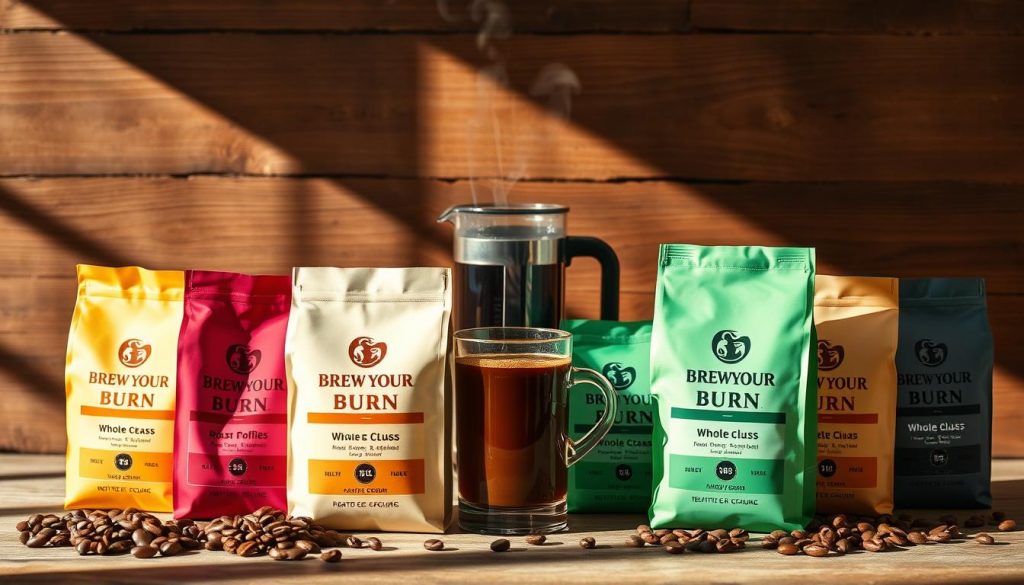
Choosing between blended coffees and single-origin beans shapes your daily cup. Blends offer balance and reliability.
Single-origin highlights a region or farm, showing terroir-driven flavors.
As a coffee lover, you’ll find each approach has clear benefits for different brewing goals.
When to choose blends vs. single-origin beans
Blends combine beans from multiple regions to hit a target profile.
Roasters like Stumptown and Counter Culture use blends for steady body, sweetness, or crema in espresso.
Pick blends for a consistent everyday cup or a balanced espresso base.
Single-origin coffees come from one country, region, or farm.
Ethiopian Yirgacheffe and Colombian Huila show distinct fruit, floral, or chocolate notes linked to their terroir.
Choose single-origin when you want to explore unique flavors and seasonal variety.
How to read roast and tasting notes to pick the best coffee blends
Start with the roast level on the bag. Light roasts keep brightness and complex acidity.
Medium roasts soften acidity and add body. Dark roasts push toward chocolate, caramel, and smoky flavors.
Tasting notes list fruit, chocolate, nut, floral, or spice descriptors. Use them like a map.
If a bag mentions blackberry and jasmine, expect bright acidity and floral aromatics.
Look for origin, processing method, and roast date to judge freshness and likely flavor.
Suggestions for tasting flight ideas to identify preferred flavor profiles
Build a simple flight of three coffees. Choose an African light roast, a Central American medium roast, and a South American dark roast.
Brew each with the same method, such as pour-over, to keep variables steady.
Cup side-by-side. Note acidity, body, sweetness, and aftertaste. Record which tasting notes stand out.
Repeat flights over time to track how your palate shifts.
This practice sharpens your sense of what makes the best coffee blends or single-origin picks for your taste.
Subscriptions, Gifts, and Coffee Merchandise
Choosing a coffee subscription can be fun for coffee fans. You can pick how often you get beans, whether ground or whole, and the roast level.
Many services offer single-origin and blends, letting you try different tastes without leaving home.
Look for subscriptions with fresh roast dates and flexible plans. They should let you pause or change deliveries.
Also, check if they provide clear sourcing details and sample sizes for new flavors.
How subscriptions work and what to seek
- Choose delivery cadence and grind type to match brewing method.
- Select single-origin or blends based on curiosity or consistency.
- Check roast date, shipping speed, and ability to skip shipments.
Coffee gift ideas for every taste
For beginners, a pour-over kit or a sampler pack is great. It introduces them to different roasts.
For those who already brew at home, a specialty coffee subscription or a precision burr grinder is a thoughtful gift.
Other ideas include quality hand grinders, electric milk frothers, and branded mugs from well-known roasters like Stumptown or Blue Bottle.
- Novice: simple brewer, filters, and a sampler.
- Enthusiast: burr grinder, gooseneck kettle, or curated subscription.
- Gift bundle: pairing a subscription with coffee merchandise creates an instant experience.
Essential coffee merchandise and accessories
Good accessories ensure consistent results. A scale, burr grinder, gooseneck kettle, and quality filters are key.
Insulated mugs keep drinks hot, and tamping tools and a reliable tamper are crucial for espresso.
- Scale: accurate dosing for balanced extraction.
- Burr grinder: uniform grounds that improve flavor.
- Gooseneck kettle: controlled pour for pour-over technique.
- Insulated mugs and filters: practical daily upgrades.
Many roasters and retailers offer coffee merchandise with subscriptions. This makes for a perfect gift for coffee lovers.
They get new beans and useful accessories to enhance their coffee routine.
Care and Maintenance of Coffee Gear and Sustainability Tips
Keeping your coffee gear clean makes every cup better and saves money. You’ll learn simple cleaning steps, how to make your equipment last longer, and eco-friendly tips for coffee lovers.
Routine cleaning for espresso machines, grinders, and brewers
Use a special detergent to backflush your espresso machine as the manual suggests.
Run a blind filter and detergent cycle, then rinse well to get rid of any leftovers.
Clear out trapped grounds from your grinder every week. Use a brush to clean the burrs, and consider using cleaning tablets once a month.
Keep the hopper walls clean and the beans dry to avoid clumps.
Wash your brewers, carafes, and filters after each use. Use hot water and mild soap to remove oils that can make coffee taste stale.
For single-serve machines, do descale cycles as needed.
Available From Our Teepublic Coffee Shop
Extending the life of equipment and getting consistent results
Use filtered water to prevent scale buildup and protect your equipment’s parts.
Change your water filters as the manufacturer advises.
Stick to the recommended service times for your espresso machine and grinder. Fixing small issues early can prevent big problems later.
Store your gear in a dry, clean spot, away from sunlight and heat.
Keep your technique consistent: dose, grind, and tamp the same way every time.
Clean equipment ensures stable extraction and consistent flavor from batch to batch.
Sustainable choices: ethical sourcing, composting grounds, and eco-friendly accessories
Choose beans that are ethically sourced, like Fair Trade or Rainforest Alliance certified.
Buy from roasters who share information about the farms or cooperatives they work with.
Compost your coffee grounds at home or give them to community gardens. This enriches the soil and reduces waste.
Use reusable filters, cloth filters, or stainless-steel mesh to reduce waste from single-use papers and pods.
Pick eco-friendly coffee accessories like stainless-steel milk pitchers, glass carafes, and durable merchandise.
These choices help reduce plastic use and support sustainability while keeping your coffee tasting great.
Small, consistent habits in cleaning, maintenance, and sourcing lead to better flavors, longer-lasting gear, and a more sustainable coffee routine for coffee lovers.
Available from our Coffee Shop
Conclusion
For coffee lovers, the best cup starts with simple choices. The right beans, a consistent grind, clean water, and reliable equipment are key.
Understanding Arabica and Robusta, how roast and origin shape flavor, and how grind size interacts with brew method helps you make better coffee at home.
These fundamentals turn routine brewing into a satisfying craft.
Exploring gourmet coffee and specialty coffee unlocks new tastes. Try a single-origin to notice unique notes, then sample a blend to see how roasters balance flavors.
Learning the basics of espresso and milk texturing, plus cold brew techniques, gives you tools to enjoy both intense and smooth drinks.
The best coffee blends often reveal themselves through small tasting flights and repeat experiments.
A short coffee subscription or a sampler can speed learning by delivering fresh beans and variety to your door.
Regular care of grinders and machines keeps results consistent and extends gear life.
For deeper technical guidance, consult James Hoffmann’s How To Make The Best Coffee at Home to refine technique and troubleshoot common issues.
Learning coffee is gradual and rewarding.
Pick one new bean or method this week, keep notes, and return to this guide as your reference.
With curiosity and practice, you’ll steadily improve taste and confidence as a home barista.

